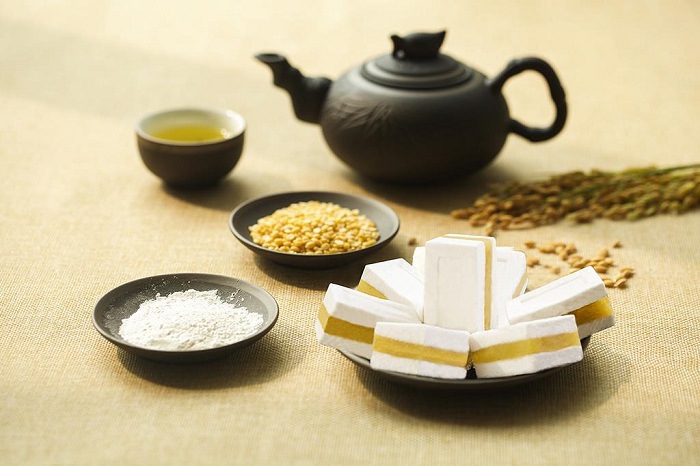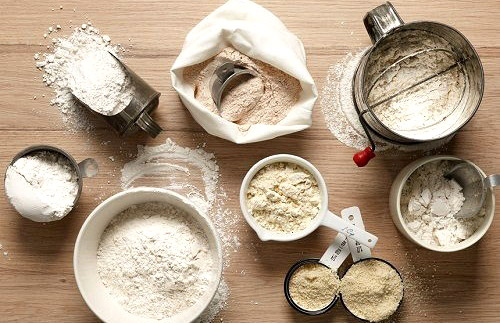Bánh Khảo
1. Overview
Khao cake (bánh khảo) is a traditional Vietnamese pastry that holds a special place in the culture of Cao Bằng province, especially among the Tày and Nùng ethnic groups. Made primarily from glutinous rice flour and lard, this cake is simple in appearance but rich in symbolic and festive value, especially during the Lunar New Year and ancestral worship ceremonies.
2. Characteristics
-
Main ingredients: Roasted glutinous rice flour, lard (or roasted peanuts), sugar, and sometimes sesame seeds.
-
Shape: Usually rectangular or square, pressed into wooden molds with decorative patterns.
-
Texture: Dry and powdery outside but melts in the mouth thanks to the rich filling.
-
Flavor: Lightly sweet, nutty, and aromatic, with a slightly buttery undertone from the lard.
3. How It's Prepared
Making bánh khảo is a meticulous process that requires patience and precision:
-
Roasting the rice: Glutinous rice is carefully roasted until golden, then ground into a fine, fragrant flour.
-
Preparing the filling: Sugar is melted and mixed with lard or roasted peanuts to form a sweet, smooth paste.
-
Assembling the cake:
-
A layer of flour is placed into a wooden mold.
-
The sweet filling is added in the center.
-
Another layer of flour is added on top and pressed firmly.
-
-
Packaging: After molding, the cakes are carefully wrapped in colored paper or thin plastic, especially during Tet.
4. Cultural Significance
-
Tet specialty: Bánh khảo is an essential offering during Tết (Vietnamese Lunar New Year), symbolizing prosperity, sweetness, and reunion.
-
Ancestral worship: Often placed on altars as an offering to ancestors, representing respect and tradition.
-
Preservation of heritage: The cake is a cultural icon of Cao Bằng’s ethnic communities, passed down through generations, especially in rural households.
5. How to Enjoy
Bánh khảo is usually enjoyed during tea time. A bite of the soft, crumbly cake followed by a sip of green tea helps balance the richness and sweetness. It’s not only a snack but also a reminder of family bonds and ethnic identity in Vietnam’s northern highlands.



